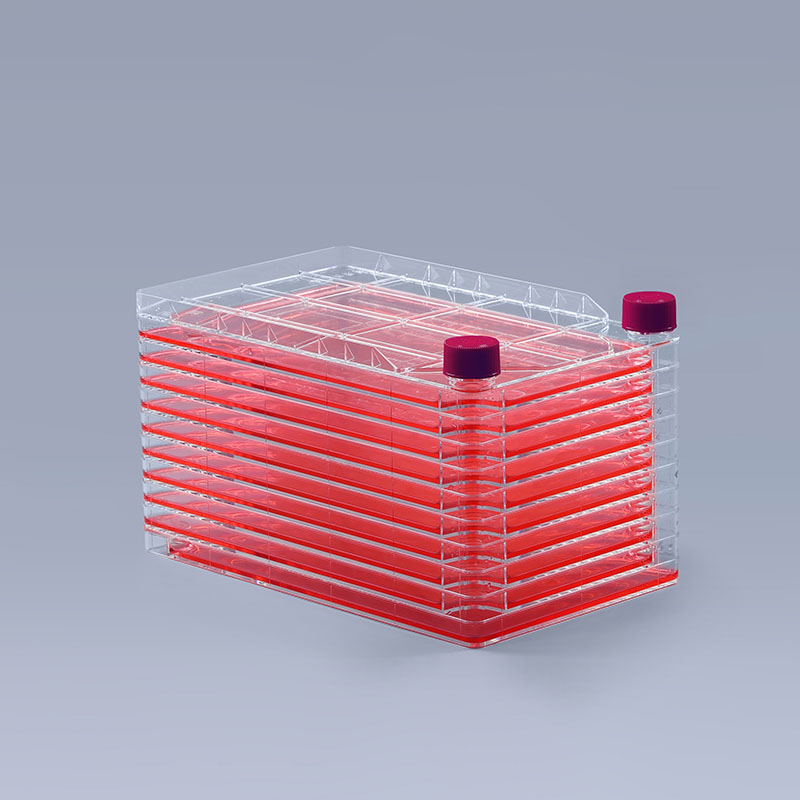As a large-scale cell culture vessel, the Cell Factory has gradually found applications in various fields such as biopharmaceuticals, medical research, and vaccine production. In adherent cell cultivation, it offers the following advantages:
Higher Growth Density: With its multi-layer design and large capacity, the Cell Factory provides greater space for cell growth, resulting in higher cell growth density.
Better Cell Quality: It provides a more stable growth environment, reducing abnormal cell growth and variations, thus obtaining higher-quality cells.
Lower Costs: This cultivation device can save factory space and has good linear scalability. Thanks to its efficiency and scalability, the cost of large-scale cell culture is greatly reduced.

Higher Production Efficiency: Through the use of automated equipment, continuous cultivation and harvesting of cells can be achieved, significantly improving production efficiency.
With the continuous development of biotechnology, the application of Cell Factory is becoming increasingly widespread in many fields. Its unique structural design and significant advantages in adherent cell cultivation make it an ideal choice for large-scale cell culture.
With the continuous progress of research technology and the application of new materials, this cultivation device will become more efficient and intelligent, providing stronger support for the development of biopharmaceuticals and other fields.
The FAI climbed 5.9 percent year-on-year in the first 11 months of 2018, quickening from the 5.7-percent growth in Jan-Oct, the National Bureau of Statistics (NBS) said Friday in an online statement.
The key indicator of investment, dubbed a major growth driver, hit the bottom in August and has since started to rebound steadily.
In the face of emerging economic challenges home and abroad, China has stepped up efforts to stabilize investment, in particular rolling out measures to motivate private investors and channel funds into infrastructure.
Friday's data showed private investment, accounting for more than 60 percent of the total FAI, expanded by a brisk 8.7 percent.
NBS spokesperson Mao Shengyong said funds into weak economic links registered rapid increases as investment in environmental protection and agriculture jumped 42 percent and 12.5 percent respectively, much faster than the average.
In breakdown, investment in high-tech and equipment manufacturing remained vigorous with 16.1-percent and 11.6-percent increases respectively in the first 11 months. Infrastructure investment gained 3.7 percent, staying flat. Investment in property development rose 9.7 percent, also unchanged.
 English
English


















































